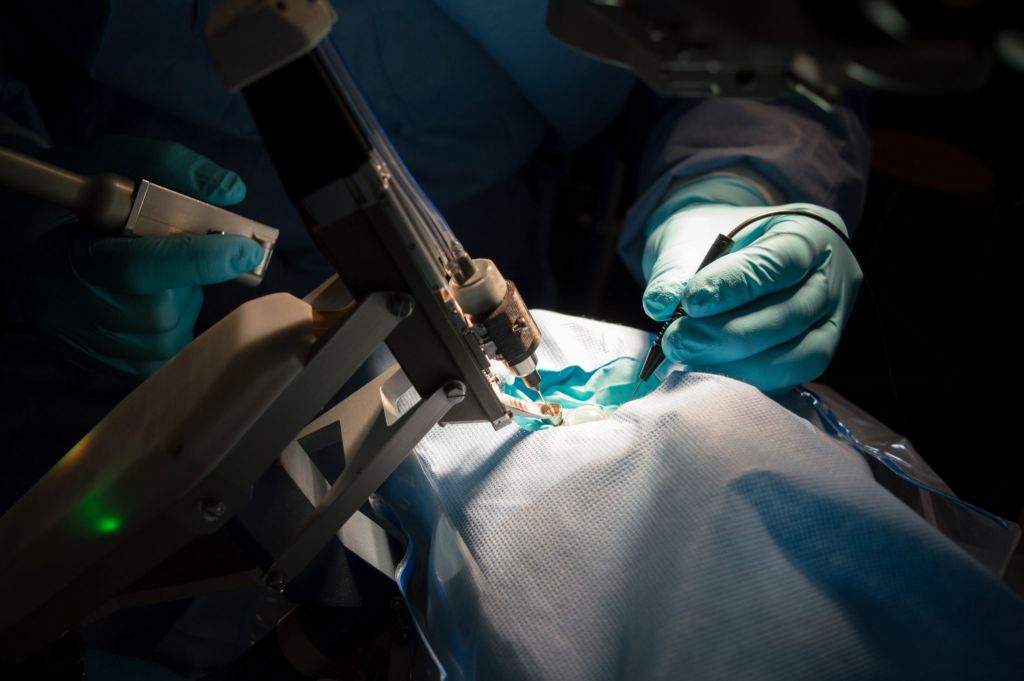
Preceyes, the Eindhoven based start-up in robot-assisted precision eye surgery, has received CE marking approval for its surgical System, enabling the firm to market their system in Europe. The system assists trained surgeons during certain tasks around vitreoretinal surgery in patients under local or general anaesthesia. This technology is anticipated to enable not only a better treatment to be provided to patients, but it also offers the possibility of developing completely new treatments.
“The Preceyes Surgical System holds the potential to transform eye surgery – and it’s a development that can’t come fast enough,” explains Preceyes’ Chief Medical Officer, Prof. Marc de Smet M.D. “The problem is one of demographics. People born in the years after World War II – the baby boomers – might be able to have wrinkles filled and hips replaced, but they cannot escape age-related eye diseases. Many of these eye diseases can be treated successfully, but the big problem is that many countries haven’t trained enough eye doctors to deal with this huge workload – a workload that is only going to get larger as the baby boomers get older.”
“Baby boomers might be able to have wrinkles filled and hips replaced, but they cannot escape age-related eye diseases.”
Vision loss is disastrous not only for the person it affects but their friends, families and society too. Personal freedom is lost. Their ability to work is diminished. They require more help from their friends, family and healthcare systems. Cumulatively, the burden on society is huge. But in many cases, these diseases are treatable by skilled surgeons – and this transforms lives and benefits society. Unfortunately, there aren’t enough experienced eye surgeons to do the job, De Smet says. “Preceyes’ answer was to develop a robotic assistant for eye surgeons.” The robotic manipulator of the Preceyes Surgical System holds and positions a surgical instrument inside the eye, following positioning commands that the surgeon provides with a controller. The robotic assistant can perform multiple injection, peeling and tissue manipulation tasks.
Moreover, “the robotic assistant promises to extend surgeons’ OR lifespan”, De Smet says. “Surgeons undergo a learning curve; they continue to learn and get better with experience, until another natural consequence of ageing kicks in: hand tremor. The Preceyes Surgical System filters tremor, meaning those highly experienced surgeons no longer need to retire from surgery when tremor starts.”
The CE marking promises to be the start of new tasks by the eye robot. Gerrit Naus, Preceyes B.V.’s Chief Executive Officer: “While we are focusing on vitreoretinal applications at the moment, we believe our versatile technology can be developed to assist surgeons in performing most surgical procedures in the eye. We will leverage the CE marking approval for further industrialization of our technology and to access new markets outside of the EU in the near future.”

